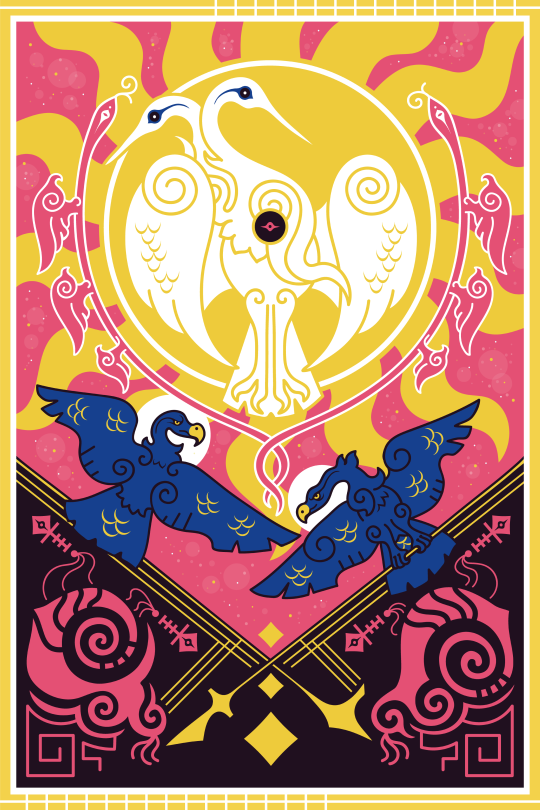Don't wanna be here? Send us removal request.
Text
What would the universe like you to know, but without anyone telling you?
𓅔

Pile 1
Hmm, you had a lucky childhood, even if some don't think so, or you can provide someone with well-being during their childhood. You're a lucky person, it would be good for you to travel! Go far away, your destination is far from here, my dear. Go in the farthest direction, learn about life and what it can offer you, don't stay on dry land!
Pile 2
You don't listen to your intuition! I feel like you see something, but you don't act. You prefer to pretend you didn't see it. Be careful with stagnation, be careful with truths you think are implacable, be careful with thinking things are immutable. Everything changes every day, every day planet Earth moves, why wouldn't life do the same? Every day is a different day to create a story. Also be careful with fake, envious people. Many people, or one person in particular, see you with malicious eyes, free yourself! Take care of yourself. Really.
Pile 3
There's admiration here. Someone might admire you, look at you with loving and caring eyes (it doesn't have to be romantic). It could also be that someone idealizes you deeply. They pay a lot of attention to looks, like if you asked them to paint you, they'd do it in every detail. The phrase "your place is neither here nor there" came to mind. Some people may look elsewhere for acceptance, but you already have it in your family. Others feel isolated from other people, but a family structure will stands in your way.
290 notes
·
View notes
Text
The Sisters Grimmoire - The Fox's Gift
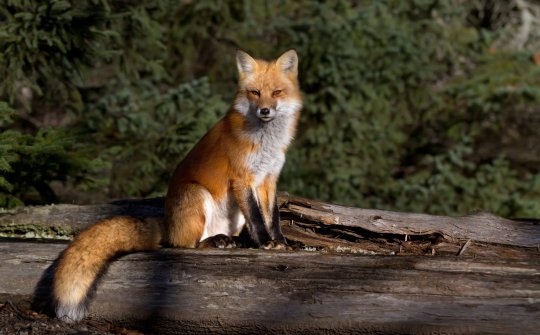
On the last day, he went with a heavy heart into the country, and met the fox. "Thou knowest how to find all kinds of hiding-places," said he; "I let thee live, now advise me where I shall hide myself so that the King's daughter shall not discover me." "That's a hard task," answered the fox, looking very thoughtful. And length, he cried, "I have it!" and went with him to a spring, dipped himself in it, and came out as a stall-keeper in the market, and dealer in animals. The youth had to dip himself in the water also, and was changed into a small sea-hare. […] "When the King's daughter goes to the window, creep quickly under the braids of her hair". And now the time arrived when she was to search for him. She went to one window after another in turn, from the first to the eleventh, and did not see him. When she did not see him from the twelfth either, she was full of anxiety and anger, and shut it down with such violence that the glass in every window shivered into a thousand pieces, and the whole castle shook.
-The Sea-Hare, Grimm's Complete Fairy Tales
Intent: To hide your magics so that they cannot be detected until their work is done.
Ideal Timing: Dark of the Moon, for concealment and deception
Materials:
Clam Shell
Paper & Pen
Black Taper Candle
Jar with Screw-top Lid
Blueberry Leaves - to keep evil away
Cherry Pits - to repel unwanted attention
Poppy Seeds - to pass without notice
Write the name of the spell you wish to conceal on a slip of paper. If the spell does not have a name, simply write the type or intention of the spell and the date you cast it. Place the paper in a small glass jar with a handful of Blueberry Leaves, Cherry Pits, and Poppy Seeds. Hold the jar to your mouth and whisper:
Now you see it, now you don’t Long you’ll seek, but find you won’t Ever hidden from your view Seen by me, but not by you
Spit into the jar for extra potency, then screw the lid onto the jar. Light the black candle and drip wax onto the lid until it is mostly covered. Press the shell into the liquid wax concave-side-down to keep the spell hidden.
This will not hinder the effects of the spell you already cast, just keep it from being detected until it has accomplished what it needs to do. This is ideal for manipulation and baneful magics, as well as any spell that you wish to keep hidden for reasons of stealth.
Once the spell has done its' work, remove the shell, open the jar, and discard the contents. The jar can be cleansed with salt or water and used for future magical workings. Be sure to remove the wax from the lid before cleansing.
-from The Sisters Grimmoire: Spells and Charms for Your Happily Ever After, (2nd ed) © 2017 Bree NicGarran
Photo Credit - Voyageurs Conservancy
Want more fairy tale spells? Check out the masterpost here.
If you’re enjoying my content, please feel free to drop a little something in the tip jar, subscribe to my monthly show Hex Positive, or check out my published works on Amazon or in the Willow Wings Witch Shop. 😊
58 notes
·
View notes
Note
So greek mythology is now apart of the misfits lore hopefully will see the primordials titans & Greek gods in here eventually & if the Greek pantheon exists do other pantheons exist in the misfits universe
Yes, all mythologies are canon in the lore of my story. We are playthings of the gods, after all.
The Saturnalicius Princeps will be doing story time in the next Claws update.

52 notes
·
View notes
Text
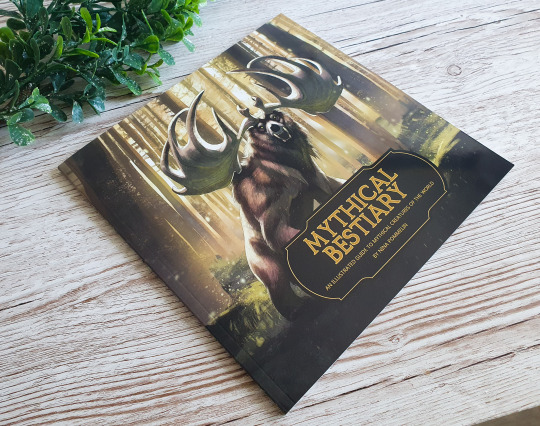
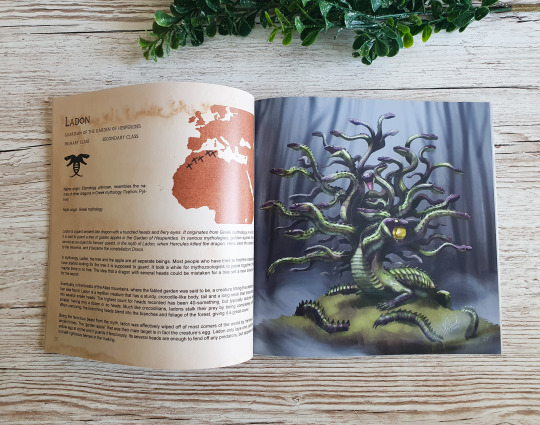
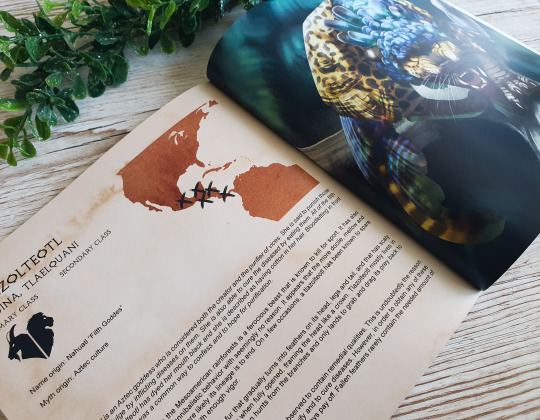
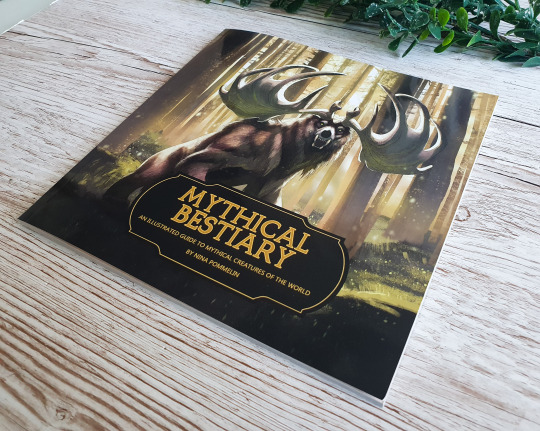
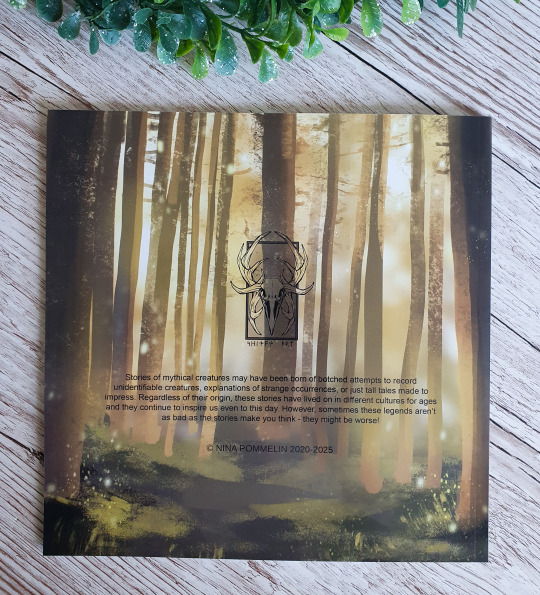
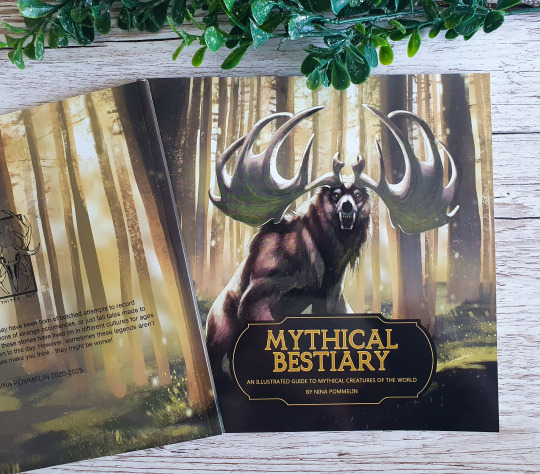
MYTHICAL BESTIARY - AN ILLUSTRATED GUIDE TO MYTHICAL CREATURES OF THE WORLD is now available!
MYTHICAL BESTIARY is an imaginary guide to 31 different creatures from various world mythologies and folklore. In addition to introducing you to these creatures and their origin, this book presents them as real beasts that have been hiding from us or that have been just ignored by science - until now.
The book contains illustrations, sighting maps, classifications for each creature, a summary of the actual myth and its origin as well as a "scientific" look into how each creature fits into our world.
In addition to selling this on Etsy I will be bringing copies with me to events I'm participating in 2025!
62 notes
·
View notes
Text


Love this.
Vincent Price and Jacqueline De Witt -
Twice Told Tales; House of the Seven Gables (1963)
60 notes
·
View notes
Text

Cernunnos
Illustration of the pagan god, Cernunnos. Humanoid with a deer skull holding a torc and spear with the triskele symbol framed behind him
193 notes
·
View notes
Text

Есть в графском парке черный пруд, Там лилии цветут..
Баллада Атоса из к/ф «Д’Артаньян и три мушкетёра» 1978
74 notes
·
View notes
Text
The Gauls: Ancient Celtic Peoples of Europe
The Gauls were a collection of Celtic tribes who lived in what is now France, Belgium, Luxembourg, Switzerland, and parts of Italy, the Netherlands, and Germany during the Iron Age. Known for their fierce independence, rich culture. And resistence to Roman conquest, the Gauls played a vital role in shaping the history of ancient Europe.
Who Were the Gauls?
The term "Gaul" comes from the Latin Gallia, the Roman name for the region the Gauls inhabited. They were not a single unified nation but a confederation of tribes, each with its own customs, leaders, and territories. Despite their diversity, they shared Celtic language, art, religion, and social structures, linking them culturally to other Celtic peoples across Europe.
The Gauls were primarily agrarian, living in hillforts and villages, practicing farming, herding, and metalworking. They were also skilled in trade, exchanging goods like salt, grain, textiles, and metalwork with neighboring cultures, including the Greeks and Romans.
Society and Culture
Gaulish society wad tribal and hierarchical:
At the top were nobles and warrior elites who commanded respect through leadership and bravery in battle.
Druids held spiritual, legal, and intellectual authority, acting as priests, judges, and keepers of oral tradition.
The majority of the population were farmers, craftsmen, and traders who sustained the tribes' economy.
Gauls were renowned for their artistry, particularly in intricate metalwork, jewelry, and weaponry. Their art featured swirling geometric patterns, animal motifs, and symbolic designs that reflected their spiritual beliefs.
Religion and Beliefs
Like other Celtic peoples, the Gauls practiced polytheism, worshipping numerous gods connected to nature, warfare, fertility, and the Otherworld. Sacred groves, rivers, springs, and hilltops were their primary religious sites.
Some prominent Gaulish deities included:
Cernunnos, the horned god of nature and animals.
Epona, the goddess of horses and fertility.
Taranis, the thunder god.
Sucellus, associated with agriculture and abundance.
Druids oversaw rituals, sacrifices, and festivals that honored these deities and the cycles of nature.
Warriors and Warfare
The Gauls were feared warriors in the ancient world. They fought with long sword, spears, and shields, often wearing brightly colored clothing and trocs (neck rings) as symbols of status. They also had a reputation for charging into battle fearlessly, sometimes without armor.
In 390 BCE, a group of Gauls famously sacked Rome, leaving a deep impression on Roman memory. Over the following centuries, they repeatedly clashed with Roman forces.
Roman Conquest of Gaul
The most famous confrontation between the Gauls and Rome came during Julius Caesar's Gallic Wars (58—50 BCE). Despite fierce resistance led by Vercingetorix, a chieftain who united several tribes against Rome, the Gauls were ultimately defeated.
After their conquest, Gaul became a Roman province, heavily influenced by Roman culture. Many Gaulish gods were merged with Roman ones, and Latin replaced the Gaulish language. However, some Celtic traditions survived beneath the surface.
Legacy of the Gauls
Even after their assimilation into the Roman Empire, the legacy of the Gauls endured. Elements of their language, customs, and mythology influenced later French culture. Modern France still carries the memory of its Celtic past—the name "France" itself stems from the later Frankish period, but "Gaul" remains a poetic and historical name for the region.
Today, the Gauls are remembered as a symbol of resistance, freedom, and cultural identity, their stories immortalized in history, archaeology, and even popular culture (like the famous Asterix comics).
Conclusion
The Gauls were more than just warriors who fought Rome—they were a vibrant Celtic people with a rich culture deeply tied to nature, spirituality, and craftsmanship. Through much of their world was transformed by Roman conquest, their spirit remains woven into the history of Europe, a reminder of the diverse cultures that flourished before the rise of empires.
#circleofcrows.txt#gauls#ancient gauls#gallia#celtic peoples#ancient celts#celtic history#iron age europe#ancient europe#european history#druids#celtic warriors#vercingetorix#julius caesar#gallic wars#celtic mythology#pagan europe#ancient paganism#nature worship#celtic art#celtic culture#tribal societies#roman history#pre roman europe#archaeology#mythologyblr#historyblr
4 notes
·
View notes
Text
Ancient Celtic Religion: The Sacred World of the Celts
The ancient Celts were deeply spiritual people whose religion was inseparable form their daily lives, the natural world, and their understanding of the cosmos. Unlike the centralized religions of Rome or Greece, Celtic religion was a diverse, localized system of beliefs and rituals, rooted in oral tradition and closely tied to the landscapes they inhabited.
Nature and the Sacred
For the Celts, nature was alive with spirit and power. Rivers, forests, mountains, springs, and even specific trees were believed to be sacred, inhabited by deities or spirits. Certain animals—such as the stag, boar, raven, and horse—were revered as messengers or manifestations of the divine.
The Celts did not build large temples in thr early period; instead, they worshipped in sacred groves, hilltops, lakes, and springs. Offerings of weapons, jewelry, and even human or animal sacrifices were left in these natural sanctuaries to honor the gods and ensure the well-being of the tribe.
Polytheism and the Celtic Pantheon
Celtic religion was polytheistic, honoring many gods and goddesses, often with local or regional variations. While their names and attributes differed from tribe to tribe, some common deities appear throughout the Celtic world:
Lugh — a god of skill, crafts, war, and leadership, often associated with the sun.
Brigid — a goddess of poetry, healing, and smithcraft, later incorporated into Christian tradition as Saint Brigid.
Dagda — a fatherly god of abundance, fertility, and wisdom, known as the "Good God."
Morrígan — a complex goddess of war, fate, and sovereignty, sometimes appearing as three sisters.
Epona — a goddess of horses, fertility, and travel, worshipped even by Roman soldiers.
Celtic gods were not distant, abstract figures—they were woven into the rhythms of daily life, the land, and the cycles of the seasons.
The Role of the Druids
Druids were the spiritual and intellectual elite of Celtic society. They served as priests, judges, healers, teachers, and keepers of oral tradition. Druids conducted rituals, interpreted omens, and advised chieftains. They also maintained sacred knowledge, including astronomy, law, genealogy, and the cycles of nature.
The Druids left no written records of their beliefs, preferring oral transmission. Much of what we know comes from Roman writers like Julius Caesar, who often viewed the Druids through a biased lens.
Rituals, Festivals, and the Afterlife
Celtic rituals often involved offerings and sacrifices—sometimes animals, occasionally humans—to appease or honor the gods. They also marked the turning points of the year with seasonal festivals that celebrated life, death, and renewal:
Samhain (October/November) — the Celtic New Year, when the veil between the worlds was thin.
Imbolc (February) — a festival of purification and the first stirring of spring, associated with Brigid.
Beltane (May) — a fertility festival celebrating the beginning of summer.
Lughnasadh (August) — a harvest festival honoring Lugh and the bounty of the land.
The Celts strongly believed in an afterlife. Death was not the end but a transition. Souls were thought to travel to the Otherworld, a realm of beauty, abundance, and eternal youth. Burial practices included grave goods—such as weapons, jewelry, or food—to accompany the deceased into the next life.
Roman Influence and Transformation
When the Roman Empire expanded into Celtic lands, many Celtic deities were merged with Roman ones, and some rituals adapted to new cultural influences. Over time, Christianity replaced the old religion, but traces of Celtic beliefs survived in folklore, seasonal festivals, and local traditions.
Legacy of Ancient Celtic Religion
Today, the ancient Celtic faith still resonates. Modern Celtic-inspired paganism and Druidry draw inspiration from old myths, rituals, and the reverence for nature. The gods and festivals of the Celts remain alive in stories, songs, and cultural memory, reminding us of a time when the natural world was sacred, and every hill, river, and forest held a spark of the divine.
#circleofcrows.txt#celtic religion#ancient celts#celtic mythology#druids#polytheism#paganism#ancient paganism#nature worship#sacred groves#celtic festivals#samhain#imbolc#beltane#lughnasadh#brigid#lugh#morrigan#dagda#epona#celtic deities#celtic spirituality#otherworld#celtic folklore#oral tradition#pagan europe#historyblr#mythologyblr#witchblr
1 note
·
View note
Text
⛓️ Iron Age Europe: A Time of Transformation and Innovation⛓️
The Iron Age marks one of the most important periods in the history of Europe, representing a time of profound social, technological, and cultural change. Spanning roughly from 1200 BCE to 600 CE (varying by region), the Iron Age saw the rise of new societies, the spread of new technologies, and the development of the foundations upon which later European civilizations would be built.
What was the Iron Age?
The Iron Age is defined by the widespread use of iron tools and weapons, which gradually replaced bronze as the dominant material for crafting. Iron was not only more abundant than the tin and copper needed for bronze, but it also produced harder, more durable tools and weapons, which had significant impact on agriculture, warfare, and daily life.
The Iron Age followed the Bronze Age and is typically divided into three phases:
Early Iron Age
Middle Iron Age
Late Iron Age
The exact timing and characteristics of these phases varied across the European continent.
The Spread of Ironworking
Ironworking spread through Europe from the Near East and Anatolia, reaching central Europe around 800 BCE and eventually extending to the British Isles and Scandinavia. This technological shift allowed for more effective farming tools, which in turn supported larger populations and more complex societies.
Societies of Iron Age Europe
Iron Age Europe was not a single culture but a mosaic of diverse tribal societies, each with its own language, customs, and way of life. Some of the key cultural groups during this time included:
The Celts of Central and Western Europe
The Etruscans of Italy
The Germanic tribes of Northern Europe
The Iberians of Spain and Portugal
The Dacians of Eastern Europe
The Picts and Britons of the British Isles
Most Iron Age societies were agrarian, living in small villages or hillforts. They raised livestock, grew crops, and engaged in trade both locally and over long distances. Metalwork, particularly in iron, bronze, and gold, became highly sophisticated, with ornate jewelry, weapons, and ceremonial objects revealing both artistry and social status.
Religion and Beliefs
Iron Age Europeans practiced polytheistic and animistic religions, worshipping a variety of nature spirits, deities, and ancestors. Religious sites were often natural places— groves, rivers, springs, and mountains— where offerings were made to ensure fertility, success in battle, and harmony with the unseen world.
Rituals sometimes included human and animal sacrifices, as archaeological finds such as bog bodies suggest. These societies valued the cyclical rhythm of nature, which reflected in their festivals and myths.
Warfare and Power
Iron Age Europe saw the rise of warrior cultures. Iron swords, spears, and shields allowed for more effective combat. Conflict was common, as tribes fought for land, resources, and prestige.
Hillforts which combined defense and status, became centers of power. Some grew into proto-urban settlements, while others remained small fortified villages.
Contact with the Classical World
In the later stages of the Iron Age, European tribes increasingly came into contact with the growing powers of the Mediterranean world, particularly Greece and Rome. Trade networks expanded, bringing new goods, ideas, and influences.
Eventually, Roman expansion would bring the Iron Age to an end in much of Europe. The Roman conquest of Gaul (modern France), Britain, and parts of Iberia absorbed many Iron Age cultures into the Roman world. Yet, in places like Ireland and Scotland, Iron Age traditions continued for centuries beyond the fall of Rome.
The Legacy of Iron Age Europe
Though many Iron Age societies were conquered or assimilated, their cultural legacies endure:
The Celtic languages (Irish, Welsh, Breton) are still spoken.
Ancient myths and festivals have survived in folk traditions.
The art, metalwork, and burial practices of this era continue to fascinate archaeologists and historians.
The Iron Age was a time of both continuity and change—a period that witnessed the birth of identities that still echo in modern European cultures.
Conclusion
The story of Iron Age Europe is one of innovation, resilience, and transformation. From humble farming villages to mighty hillforts, from handcrafted jewelry to fearsome warriors, the people of this era laid the groundwork for the Europe we know today. Their myths, art, and languages are not relics of the past but living threads in the fabric of European heritage.
#circleofcrows.txt#iron age#iron age europe#ancient history#ancient europe#archaeology#european history#tribal societies#celtic history#iberian history#british isles history#druids#hillforts#bronze age to iron age#ancient warfare#oral tradition#paganism#polytheism#early europe#folklore#ancient religion#ancient cultures#archaeologyblr
5 notes
·
View notes
Text
Who Were the Celts?
The Celts were one of the most influential and widespread cultural groups of ancient Europe. Known for their fierce warrior socieites, complex belief systems, rich mythology, and artistic achievements, the Celts have long captured the imagination of historians, archaeologists, and storytellers alike. Yet despite their prominence, much about the Celts remains shrouded in mystery, myth, and misunderstanding.
Origins and Spread of the Celts
The term "Celt" (Keltoi, as the Greeks called them) originally referred to a group of Iron Age tribal socieites that emerged in Central Europe around 1200 BCE, associated with the Hallstatt and later La Tène cultures. From thier heartlands in what is now Austria, southern Germany, and Switzerland, the Celts spread across vast territories including France (Gaul), the British Isles (Britian and Ireland), Iberia (Spain and Portugal), and even as far east as Anatolia (modern Turkey).
The Celts were not a single unified nation but rather a network of diverse tribes sharing similar languages, artistic styles, religious beliefs, and social structures. They were bound more by culture than by political unity.
Society and Daily Life
Celtic socieites were typically tribal and hierarchical. At the top stood kings or chieftains, followed by a noble warrior class, druids (religious and intellectual leaders), artisans, and farmers. Women in Celtic socieites often held higher status and more freedoms compared to their counterparts in Greek or Roman socieites, with some historical accounts even mentioning female warriors and rulers.
The Celts lived in small hillforts or villages, practiced agriculture, and were skilled metalworkers, particularly in iron, bronze, and gold. Their distinctive artwork—swirling patterns, intricate knots, and stylized animal forms—continues to influence art and design to this day.
Religion and Mythology
The Celtic belief system was polytheistic and deeply tied to nature and the land. They revered numerous gods and goddesses, each associated with elements of the natural world—rivers, animals, trees, and celestial bodies. Sacred groves, springs, and hilltops were central to their worship.
The druids were the intellectual elite of Celtic socieites, serving as priests, judges, poets, and advisors. They preserved and passed on oral traditions, myths, and laws, though much of their knowledge has been lost due to the lack of written records.
Celtic mythology is rich with heroic tales, otherworldly beings, and complex cycles of life, death, and rebirth. The stories of Cú Chulainn, the Tuatha Dé Danann, and King Arthur (with Celtic roots) reflect ancient values of bravery, honor, and the mystical connection between the human and supernatural worlds.
Conflict and Decline
The Celts came into direct conflict with the expanding Roman Empire, especially in Gaul, Britain, and Iberia. Figures like Vercingetroix (the Gallic leader who resisted Julius Caesar) are remembered as symbols of Celtic defiance. Despite fierce resistance, most continental Celtic lands fell to Rome by the 1st century CE.
However, the Celts in Ireland, Scotland, and parts of Wales and Brittany remained outside Roman control. These regions preserved Celtic languages and traditions, which later evolved into the modern Celtic cultures of today.
Legacy of the Celts
The Celtic legacy lives on, especially in the modern nations of Ireland, Scotland, Wales, Cornwall, the Isles of Man, and Brittany. Celtic languages such as Irish Gaelic, Scots Gaelic, Welsh, and Breton are still spoken, and Celtic festivals, music, and art continue to thrive.
In popular culture, the Celts are often romanticized as mystical warriors, nature-worshippers, and keepers of ancient wisdom. While many stereotypes have distorted the historical reality, the true richness of Celtic culture—its love of poetry, reverence for nature, and resilient spirits—continues to inspire people around the world.
Conclusion
The story of the Celts is one of movement, adaptation, and survival. From the heart of Iron Age Europe to thr windswept shores of Ireland and Scotland, the Celts have left an indelible mark on history. Though their empires may have faded, their myths, languages, and cultural expressions endure—reminding us that the past is never truly gone, but carried froward in story, art, and memory.
#circleofcrows.txt#celts#celtic#ancient celts#celtic history#celtic mythology#iron age europe#ancient britain#druids#polytheism#paganism#folklore#oral tradition#indigenous europe#celtic art#celtic culture#gauls#pre roman europe#ancient europe#tribal societies#myth and legend#celtic warriors#celtic spirtuality#celtic languages#irish history#scottish history#wales history#breton history
1 note
·
View note
Text
Myth: The Stories That Shape Our World
Throughout human history, myths have served as some of the most enduring and influential stories ever told. From the ancient Greek tales of gods and heroes to the rich oral traditions of thr Celtic and Norse peoples, myth is a universal human phenomenon. It transcends time, culture, and geography, shaping not only how socieites understand the world around them but also how individuals define their place within it.
What is Myth?
At its core, a myth is a traditional story passed down through generations, often involving supernatural beings, deities, heroes, or cosmic events. Unlike simple folklore or legends, myths typically seek to explain fundamental truths about the world: the origin of the earth, the nature of life and death, the reasons behind natural phenomena, or the moral values of a society.
The word "myth" itself comes from the Greek mythos, meaning "story" or "speech." Yet in modern times, it is often used dismissively to describe something false or imaginary. This reduction overlooks the profound role myths play in shaping human thought, belief systems, and cultural identity.
The Purpose of Myth
Myths serve many interconnected purposes:
1. Explaining the Unknown: In the absence of scientific understanding, ancient myths provided explanations for natural events—thunder, earthquakes, the changing seasons. For example, the Norse believed that thunder was caused by the god Thor riding across the sky with his hammer.
2. Teaching Morality and Values: Myths often carry moral lessons or cultural values. The Greek myth of Icarus warns against overambition and hubris, while African and Indigenous myths frequently emphasize respect for nature and balance.
3. Establishing Social Order: Myths justify and reinforce social structures, such as kingship, laws, and religious practices. In ancient Egypt, the myth of Osiris reinforced the divine nature of the pharaoh's rule.
4. Providing Psychological Insight: Myths also help individuals navigate personal growth, fear and existential questions. Joseph Campbell, in his influential work, The Hero with a Thousand Faces, demonstrated how mythic hero journeys mirror the psychological journeys of individuals seeking meaning.
Myth Across Cultures
One of the most fascinating aspects of myth is its cross-cultural resonance. Cultures that never interacted often Teel strikingly similar stories. Flood myths, for example, appear in Mesopotamian, Biblical, Native American, and Hindu traditions. This suggests that myths arise from universal human concerns: survival, morality, love, loss and the desire to find order in chaos.
The Celtic myths of Ireland and Wales, such as those found in the Mabinogion or the stories of Cú Chulainn, carry themes of transformation, magic, and the Otherworld. Similarly, the rich mythologies of the Yoruba people of West Africa, the Dreamtime stories of Aboriginal Australians, and the vast pantheon of Hindu myth express diverse yet deeply human understandings of existence.
The Modern Relevance of Myth
In the modern world, myth may no longer serve as literal explanations for natural phenomena, but they continue to exert enormous influence. They survive in literature, cinema, psychology, religion, and even national identites. Modern storytelling, from The Lord of the Rings to Star Wars, draws heavily from ancient mythic structures, proving that the desire for epic tales of struggle, sacrifice, and transformation is as strong as ever.
Moreover, myths help people find meaning in times of crisis, offering symbolic frameworks to understand grief, change, and renewal. They remind us that we ate part of something larger than ourselves—a tapestry of stories that stretch back thousands of years.
Conclusion
Myth is far more than mere fantasy or superstition. It is a mirror through which humanity reflects on its deepest fears, hopes, and values. Weather told around ancient fires or through the screens of the digital age, myths continue to share the way we see the world and ourselves. In preserving and re-examining these stories, we carry foward the timeless human quest for meaning, wonder, and truth.
#myth#mythology#storytelling#cultural anthropology#comparative mythology#symbolism#joseph campbell#heroes journey#modern myth#folklore#oral tradition#ancient stories#legends and myths#human history#world mythology#meaning making#belief systems#archetypes#circleofcrows.txt
2 notes
·
View notes
